Everything people know about the Universe comes from sensing it or from scientific inquiry. The two methods seem to be different.
What exactly is the universe?
Sensing involves seeing, hearing, feeling, smelling, and tasting, right? It’s the traditional five senses that most folks learned about in elementary school a long time ago.
Scientists added complexity to the number and capabilities of the senses in modern times to include “modalities” like sense of place, pain, balance, temperature, vibration, and awareness of chemical concentrations — like salt and carbon dioxide— inside the body.
All this complexity pushes readers into deep weeds, which I am going to avoid in this essay. It will work just as well not to needlessly bewilder people.
Never mind that certain life forms like birds can sense the earth’s magnetic field, or that sharks can sense the electrical activity in living prey. Many ways of sensing the universe are possible. This essay deals with those most familiar to humans.
Until humans developed the technologies of modern science, sensing (and making sense of what was sensed through the mental process of reasoning) was how people formed ideas about what the universe is. But there was a big problem.
Senses told us the sun looked yellow, thunder sounded loud, rocks felt hard, roses smelled sweet, and almonds tasted bitter.
The problem should now be obvious.
These qualities don’t exist in the universe. They are hallucinations of brains created when organs like the eye, ear, skin, nose, and tongue interact with elements of the universe which, in themselves, share none of these qualities.

These hallucinations are inaccessible to all but the living organism who experiences them. They are unique and not detectable by others, in this sense: people can ask others if they see the same yellow color they see. When they say yes, they can decide to take them at their word, or not.
It is not possible to prove that they are telling the truth. In fact it’s not possible for anyone to answer truthfully, because no one can know how anyone but themself experiences the color yellow.
The interaction of sense organs, like eyes, with electromagnetic radiation is selective. Only a limited range of frequencies will stimulate the retina of the eye, for example, to emit the necessary electric and chemical messaging the brain uses to construct the hallucination called vision.
Some of the radiation falling into the eye does not interact with any sensing organ and remains undetected. In fact, the human eye can detect only wavelengths of light between 15 and 35 millionths of an inch long (400 to 900 nanometers).
Note to the non-technical : A nanometer is a billionth of a meter, which is written as a decimal point followed by eight zeroes and a one — i.e. .000000001. In engineering shorthand it’s written as 1E-9 meters. Humans see wavelengths of light that are 400 to 900 times longer. Scientists and engineers usually work in meters, not inches. The Editorial Board.
This narrow range is transformed by structures in the retina into messaging the brain can use. Wavelengths up to a thousand times longer (one thirty-second of an inch) are able to be felt as heat.
To the rest of the light spectrum, humans are completely blind. This spectrum includes light with wavelengths as long as sixty miles (called radio waves) down to wavelengths of light called gamma rays, which are many millions of times smaller than the wavelength of violet, the shortest wavelength human eyes can detect.
One reason people (and other life) see and feel a limited range of frequencies is because the energy of the sun that is able to penetrate Earth’s atmosphere to reach its surface lies in this limited band. The rest is blocked.
Of the sun’s energy that is able to reach Earth’s surface, 43% is in the narrow visible spectrum people can see. 49% is in the form of heat, which can be felt. Ultra-violet light — which some insects see — makes up 7%. Life on Earth evolved to sense light at wavelengths able to reach its surface.
The other parts of the light spectrum — like X-ray and gamma light — are deflected or absorbed by the nitrogen and oxygen in the atmosphere. Only 1% of the sun’s energy that manages to reach Earth’s surface lies in these high frequency bands.
A great deal of the light that reaches Earth from outside the solar system falls into the range of low-energy radio frequencies to which all Earth-life is completely blind. Radio-frequency light-waves are long and fuzzy. The sun produces mostly higher frequency light. Radio-waves seem to be unnecessary to the survival of life on Earth.
An ability to sense radio waves makes no impact on living things; it provides no survival advantages. Yes, on Earth intelligent life-forms (i.e. humans) have learned to amplify and convert radio light into sound to communicate and entertain themselves over large distances.
Scientists continue to search for evidence that far away life, should it exist, might share the same aptitude for communication. So far, the search has found nothing — no evidence for any kind of life whatever.
The image of light formed by the mind is fantastic — which means it is useful to the organism that sees the image, but the image doesn’t contain many (or any) clues about the external physical phenomenon that triggered its creation.
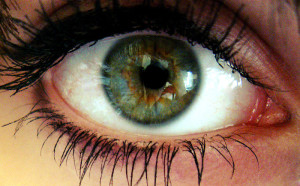
There is nothing even remotely similar between the color yellow (or any other color) and electromagnetic radiation oscillating trillions of times per second.
The hard solid feeling of rock has nothing in common with the silicon atoms from which rock is made and whose nuclei are separated from one another by spaces many thousands of times their size. Nor does it have anything in common with the hundreds of different molecules which make up the nearby skin and nerve cells — themselves many millions of times larger than silicon atoms and separated from them by large distances.
The feeling of hard solid and the color yellow exist in my mind. I am sure of it. But can I find, for example, the color yellow in your mind?
The answer is no. A brain surgeon might probe a part of someone’s brain, and they report seeing yellow. But if she examines the area of the probe, she has no chance of discovering the color yellow. She will never find it.
Professor Daniel Robinson (1938-2018) University of Oxford.
Watch from 11:04 to 13:20.
My experience with the color yellow is subjective. If you tell me you also experience yellow, I believe you, because you are like me, and it seems reasonable that we will experience things in the same way.
But if you were asked to prove you see yellow the way I see it, you couldn’t do it.
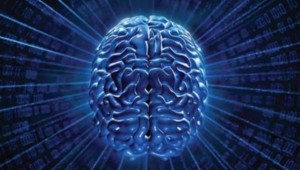
If life disappears from the universe it will take the color yellow with it. Only the electromagnetic radiation that triggered the hallucination of the color yellow will remain.
Since the radiation can no longer be detected, seen, or experienced by any conscious observer, what is it exactly? Not only colors, but sounds, feelings, smells, and tastes will vanish without a trace once life is gone.
So again, I ask: What exactly is the universe?

Let’s “look” at scientific inquiry for the answer. What does science do? Science examines the universe quantitatively and avoids the qualitative and subjective attributes the senses provide. Or it at least tries to.
Science designs detectors to find as much discoverable phenomenon as it can — phenomenon human biological senses can’t discern or aren’t sensitive enough to experience.
But someone has to ask: Aren’t these detectors nothing more than enhanced sensors augmented by gauges and dials to increase the precision of measurement? And don’t living, conscious human-beings use their senses and their brains to make sense of the information the detectors provide? What has anyone gained by science?
The scientist’s tool of choice is mathematics, because it dramatically reduces the fuzziness — the subjectivity — of the senses, and replaces qualities like the color yellow and the feeling hard solid with measurables like oscillations per second and pounds per square inch; that is, with attributes that can be measured by all observers and which, presumably, exist independently of a conscious mind.
Can mathematics really do that?
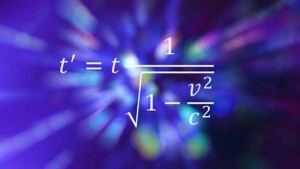
Mathematics uses logic and simplified representations of objects and forces to create symbolic models. Certain operations can be performed on these models to reveal non-intuitive relationships among the simplified variables.
Ok… again, have we gained anything? Or does mathematics force a sacrifice of information and detail to simplify understanding? Are we closer to knowing what the universe is, or farther away? Can the best sensors and the most sophisticated mathematics really get humans closer to understanding what the universe is?
One surprise that mathematics has revealed: telescopes and other sensors show that too much gravity is at work in the universe for the amount of matter and energy scientists see. 85% of the matter that must be out there can’t be seen.
More shocking: 95% of the energy and matter that the theory of gravity says must be out there, no one has ever observed. Physicists don’t know what this invisible matter and energy is, or even where it is — though some scientists believe it is evenly distributed throughout the cosmos. They call it dark matter and dark energy.
I don’t want to scare anyone, but the universe is mysterious, and no one understands it. Two questions I’m grappling with:
1 – Can the Universe exist apart from Consciousness?
2 – Is Consciousness powerless to interact with the universe in ways that change it?
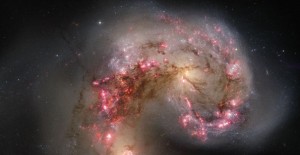
These are serious questions.
If the answers to these questions are yes, then consciousness is not necessary for the universe to exist, and the understanding of what the universe really is will probably never be complete — certainly not for humans. Consciousness is something that evolved over billions of years and will someday be missing once again.
The universe won’t notice or care. Conscious life — like humans — can think about the universe all they want. They will never change it. This is the current popular view, is it not?
But the answers to these questions could be no. And it might be possible to prove it.

If the answers turn out to be no, the implications are profound.
No means the physical universe may have evolved from consciousness, not the other way around.
No means conscious humans may have the ability to completely understand the universe and make sense of it someday.
No means that consciousness may exist independently of any individual conscious-being.
No might mean consciousness is something human beings plug into and even share.
No might mean God exists, and — though our bodies die — we never will.
Billy Lee
Thanks to Erwin Schrödinger for his Mind and Matter lectures at Trinity College, Cambridge, Oct. 1956 for inspiring Billy Lee to write this essay; see Schrödinger, What is Life? available at Amazon.com
The Editorial Board



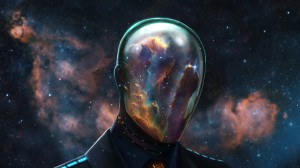
Could we in fact be the strings that string theory is looking for?
Imagine if we are all strings vibrating and sending out waves that we bounce between each other. Our senses could be how we perceive those waves in a way that makes sense to our consciousness.
This would mean that the first dimension could actually be consciousness with the others building outward from there.
Excellent. Such a well-constructed explanation. Thank you for the openness of your lack of conclusion, or the two potential conclusions. I vote #2.
I enjoyed reading your article, it was very interesting. I believe that humans are the link between science and religion; it’s up to the individual to use their consciousness to find the link. The human body was created from the same stars as the solar system; therefore we are the universe experiencing itself, and our creator is the universe. It seems a coincidence that the power of god and our universe are both unquestionable.
I believe that the universe was formed from conscious thought, everything follows a vibrational frequency of life and death. Your energy and conscious thought are transferred to feed the next cycle of life on earth. It is the same with the stars, and galaxies, therefore why would the frequency change for the universe? Only the amplitude (time) of the frequency changes.